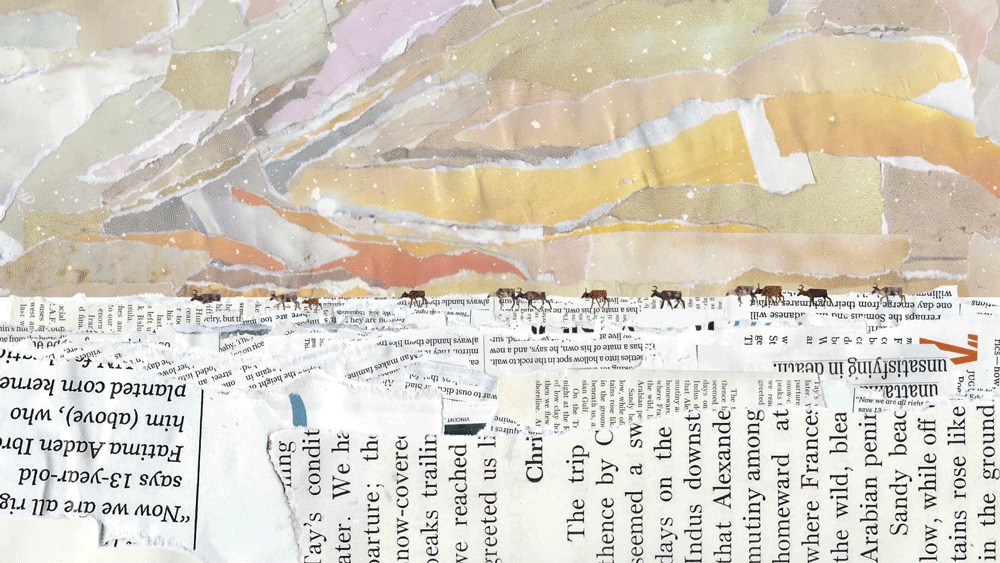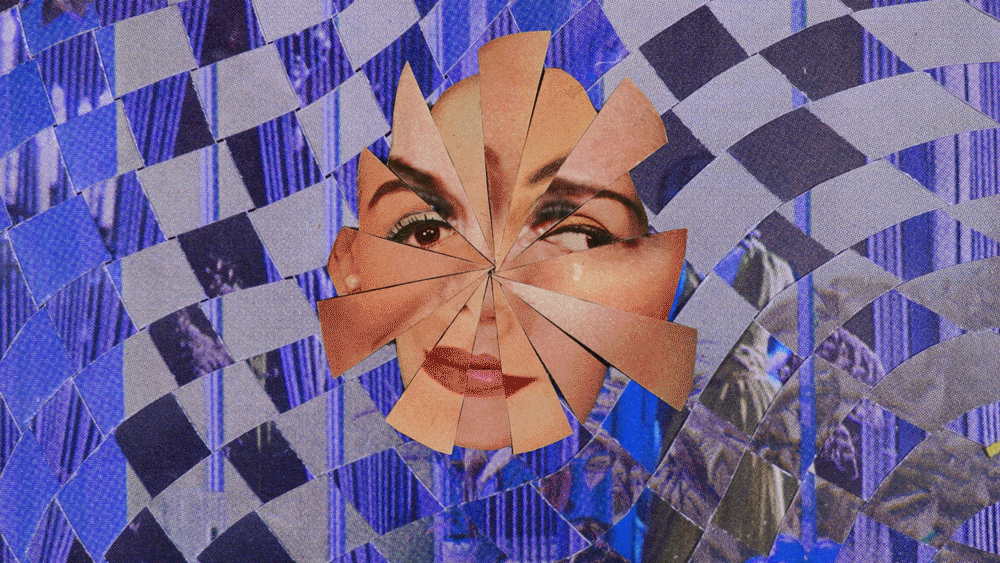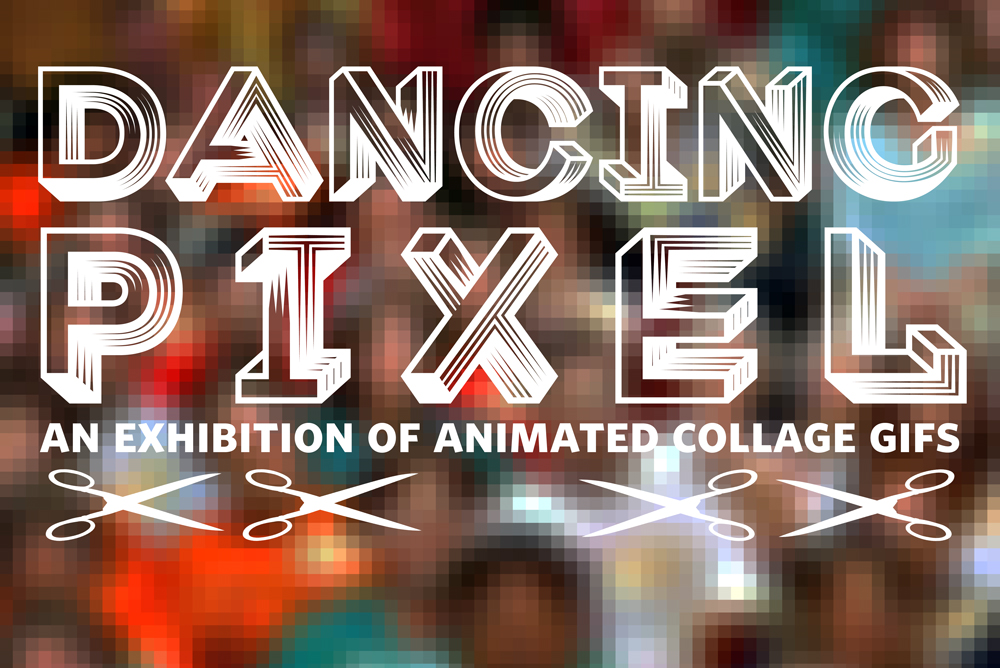
digital animation of paper fragments; 2024. Courtesy of the artist.
COLLAGE ON VIEW
The Dancing Pixel
online at Kolaj Institute
opening 15 July 2025
“The Dancing Pixel” presents eleven animated GIFs by an equal number of artists each of which offer a point of departure for a deeper understanding of this curious cultural output. The exhibition is intended to deepen our understanding of Animated GIFs and Collage in Motion, generally. We offer these artworks as a starting point. A place to debate and discuss both the technology and the art form and hopefully to inspire artists to consider where this medium fits into their larger practice.
Each of the contributing artists in the exhibition illustrates a different approach to GIF making and a different practice of putting these cultural morsels into the world.
A photograph of a cardboard wall becomes the site for a collection of animated stick figures to move around in Santa Monica, California’s multimedia artist Jody Zellen‘s Box Wall. From The Hague, Netherlands, Malwina Chabocka‘s GIFs are a by-product of larger projects. We show an example from the painter and animator’s Fly on the Windshield project. “I don’t treat paper just as a background, but as a stage–an active space where elements unfold, bend, or emerge to create depth and movement,” wrote Buenos Aires, Argentina artist and art conservationist Paulina Laura Alonso. Portland, Oregon collagist Clive Knights‘ MAKE is a simple, four-frame, analogue collage set in motion by turning it ninety degrees.

digital animation of paper fragments; 2022. Courtesy of the artist.
“Some images tell a story, but the image can only tell you the beginning. An animated GIF lets you complete the story with a middle and an end,” wrote Nisha Alberti. In the Edinburgh, Scotland artist’s “Murderous Clothes” series, she animates clothing to eat the heads of the subjects in historic portraiture. Hommage à Louise Bourgeois by Helsinki, Finland’s visual and video artist Gunzi Holmström is part of a series of animated collage that celebrates artist ancestors. Colusa, California collagist Mark Vargo is using AI trained on his own analog artworks to make stopmotion GIFs. Miwa Matreyek, Vancouver, British Columbia, Canada, whose work operates at the intersection of performance and collage shows how GIFs can be used as documentation. Providence, Rhode Island collagist Karson Schenk brings paper fragments to life in a winter landscape in Caribou. Chicago, Illinois filmmaker Lisa Barcy uses GIFs as a creative respite from the long, intense focus of filmmaking.
Dartmouth, Nova Scotia, Canada artist Katarina Marinic “started to experiment with gifs as a way to challenge and develop my skills, but to also allow for the image to be fluid and not be fixed. The ability to show movement with photographs opened up a lot more creativity and conceptual thinking.”
The exhibition was curated by Kolaj Institute’s Director Ric Kasini Kadour who wrote, “We find all of these approaches valid points on an expansive map of this terrain; a land we have not entirely made sense of. As such, we consider this exhibition a starting, not end, point for critical investigation and we welcome writers and curators who wish to contribute to be in touch. In the coming years, we hope to learn more about the history of animated GIFS, their role in culture, and how they are diffused into the cultural ecosystem and ultimately our cultural diets.”
“The Dancing Pixel” exhibition is part of Kolaj Institute’s Collage in Motion Project that explores collage and the moving image, a broad, loosely defined category that includes animations, film cut-ups, collage film, stop-motion, documentaries about collage artists, and other forms of media in which collage—as medium or genre—is present. The project manifests as articles in Kolaj Magazine, an online directory, workshops, residencies, and screenings. Artists with a practice of Collage in Motion are encouraged to submit to the online directory.
The 2025 Collage on Screen Artist Residency takes place over five weeks, 23 August-20 September 2025. Learn more and apply HERE.

VIEW THE EXHIBITION
ABOUT KOLAJ INSTITUTE
The mission of Kolaj Institute is to support artists, curators, and writers who seek to study, document, and disseminate ideas that deepen our understanding of collage as a medium, a genre, a community, and a 21st century movement. We operate a number of initiatives meant to bring together community, investigate critical issues, and raise collage’s standing in the art world. Kolaj Institute is a 501c3 Non-profit organization registered in the State of Louisiana, USA. LEARN MORE
